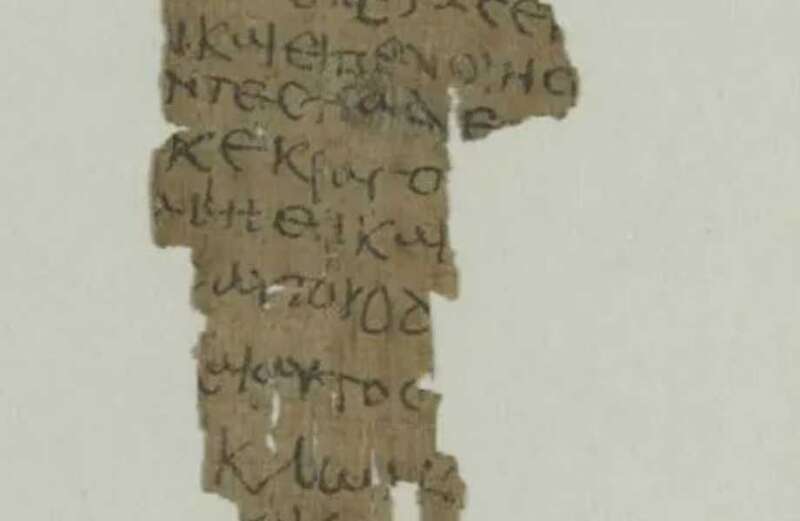THE earliest record of Jesus’s childhood has been found in a 2,000-year-old parchment that tells an incredible story not found in the Bible.
Scrawled on an ancient Egyptian manuscript, it reveals the Son of God performed a miracle known as the "vivification of the sparrows" when he was just a boy.



The 2,000-year-old papyrus - a material that predates paper - claims the five-year-old Messiah turned clay pigeons into live birds.
The tale, which is also referred to as the "second miracle", is thought to have been written as part of the Infancy Gospel of Thomas (IGT) around the 2nd Century.
The book details Jesus of Nazareth's youth that was ultimately excluded from the Bible.
 Late Pope lies in state at Vatican as thousands queue to pay respects
Late Pope lies in state at Vatican as thousands queue to pay respects
The earliest written example of the gospel was from the 11th Century.
The clumsiness of the handwriting on the recently discovered papyrus, however, has led researchers to believe it was written by a child in 4th or 5th Century Egypt.
The papyrus had been laying unnoticed at the Hamburg State and University Library in Hamburg, Germany, when experts identified Jesus' name in the text.
The Humboldt-Universität zu Berlin (HU) said in a statement that it was "a significant discovery for the research field".
"It was thought to be part of an everyday document, such as a private letter or a shopping list, because the handwriting seems so clumsy," said papyrologist Dr Lajos Berkes, from the Institute for Christianity and Antiquity at HU.
"We first noticed the word 'Jesus' in the text," he added.
"Then, by comparing it with numerous other digitised papyri, we deciphered it letter by letter and quickly realised that it could not be an everyday document."
The IGT story states that Jesus was just a five-year-old boy when his dad, Joseph, caught him moulding 12 sparrows out of soft clay while playing in a stream.
When Joseph noticed what his son was doing, he scolded him and asked why he would be moulding clay on the Sabbath - a holy day of rest and worship.
In response, Jesus ordered the clay figures to "take flight as living birds," Professor Dr Gabriel Nocchi Macedo, from the University of Liège, Belgium, told the DailyMail.
 Man, 98, left to languish in Indian jail after no one paid £116 for his release
Man, 98, left to languish in Indian jail after no one paid £116 for his release
The papyrus fragment measured four by two inches and contained a total of 13 lines of a popular religious story from the IGT, the Mail adds.
As well as the clumsy handwriting, other signifiers such as irregular lines led researchers to believe the story was likely written as part of a class exercise in a school or religious community.
However, when exactly it came into the hands of the library in Hamburg remains unknown.
Dr Macedo did say, though, that it seemed to have been inventoried after 2001.
He believes the papyrus could have belonged to the original core of the collection and was acquired through the German Papyruskartell between 1906 and 1913.
"[It] then augmented through individual purchases up until 1939," he said. "[or] it arrived … from Berlin in a box full of unconserved papyri in 1990."
It comes after breakthrough research discovered the truth behind ruins in ancient Jerusalem which verifies the Bible's accounts.
A stretch of wall in the original heart of the city was revealed to had been built by King Uzziah, as hinted at in the Bible.
For years, experts believed that Hezekiah, who ruled Judah during the 7th and 8th century BC, erected the walls after witnessing his neighbours, the Kingdom of Israel, get destroyed by the Assyrian Empire.



































